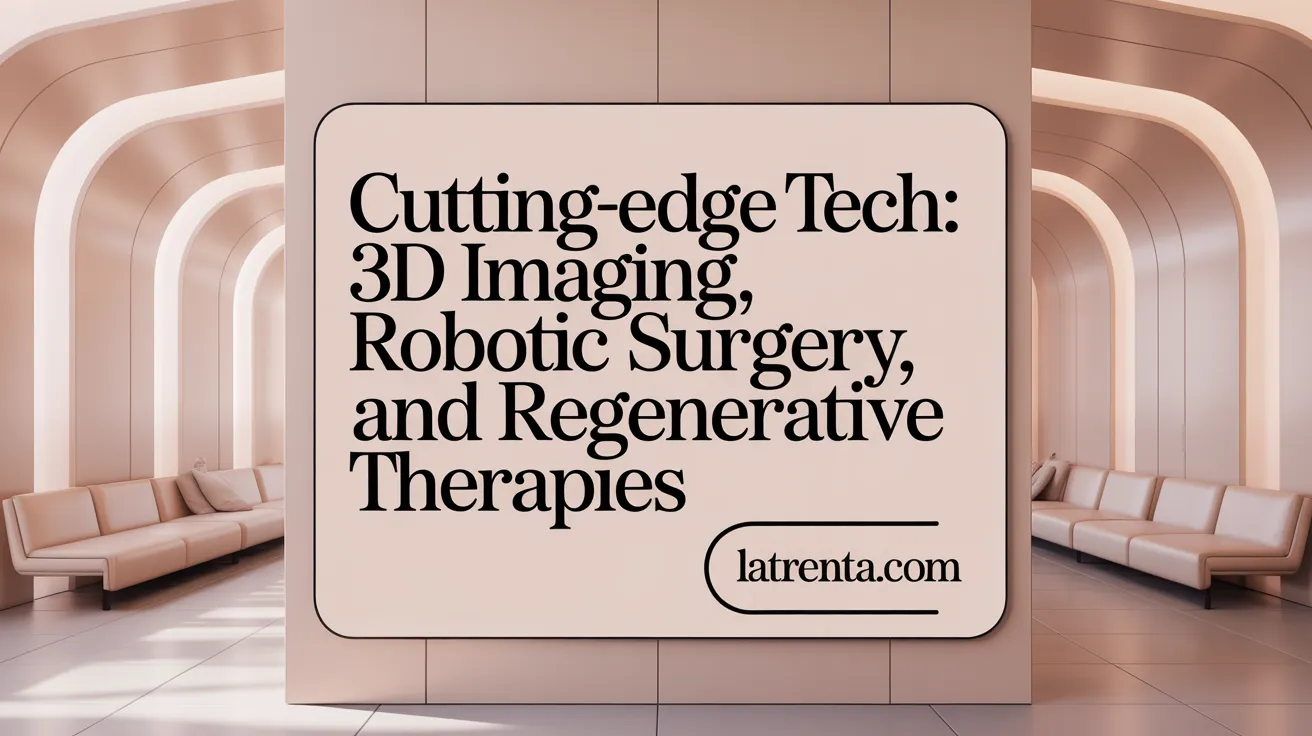Understanding the Luxury Plastic Surgery Landscape in the Northeast
As the luxury plastic surgery market continues to evolve, the Northeast stands out for its unique blend of cultural influences, technological advancement, and discerning clientele. This article explores current trends, future innovations, and the regional nuances that define luxury aesthetic procedures in this competitive and sophisticated region, offering a comprehensive outlook on what patients and practitioners can expect in the near future.
Current Trends and Popular Procedures in Luxury Plastic Surgery

What are the current trends and popular procedures in luxury plastic surgery?
In the Northeast, luxury plastic surgery is experiencing a shift toward more natural, subtle results that enhance individual beauty without overtly altering appearance. Patients increasingly prefer procedures that deliver undetectable, long-lasting outcomes while maintaining their unique facial and body proportions. For more details, see Top Trends in Plastic Surgery.
Surgical procedures such as eyelid lifts (blepharoplasty) and rhinoplasty remain highly sought after, addressing concerns like tired eyes, dark circles, and refined nose shapes. Among body treatments, liposuction—particularly ultrasonic and VASER techniques—are favored for their precision and minimal downtime. These advanced body contouring methods align with a broader trend towards personalized, minimally invasive options. Further insights on this can be found at Top aesthetic procedures predicted by plastic surgeons and Trending cosmetic procedures in the US.
Non-surgical procedures continue to grow in popularity, especially injectables like BOTOX and hyaluronic acid fillers. These treatments offer quick results and are increasingly used for preventative and corrective purposes, particularly among younger patients seeking early intervention. Relevant statistics and trends are discussed at Plastic surgery trends and Plastic Surgery Statistics.
Regenerative treatments, including stem cell therapy, exosomes, and fat transfer, are gaining momentum for skin rejuvenation and volume restoration. These methods appeal to clients desiring natural-looking enhancements with a focus on long-term health and aesthetics. Detailed trends are available at Regenerative aesthetics trends 2025 and 2025 plastic surgery trends.
This combination of surgical and non-surgical options reflects an overall trend in the luxury market toward bespoke treatments that emphasize subtlety, natural beauty, and technological innovation. Professionals like Dr. Berlet, practicing in Bergen and Essex Counties, are at the forefront, offering tailored solutions that meet the high standards of regional and international clients. Learn more about Dr. Berlet Plastic Surgeon NJ and Plastic Surgery in Essex County.
Technological Advancements and Emerging Innovations in Aesthetic Surgery

What are the latest technological advancements impacting luxury plastic surgery?
Recent technological innovations in aesthetic surgery are transforming the landscape of luxury plastic surgery, offering patients more precise, less invasive, and natural-looking results. One of the most significant tools is 3D imaging and simulation technology. This allows surgeons and patients to collaboratively visualize potential surgical outcomes with incredible detail before any procedure begins, ensuring realistic expectations and personalized planning.
Minimally invasive techniques continue to evolve rapidly. Ultrasonic-assisted liposuction and laser liposuction are now standard, reducing recovery times, minimizing scarring, and enhancing safety. Endoscopic surgeries are also gaining popularity, especially for facelifts and body contouring, as they involve smaller incisions, less pain, and quicker healing.
Regenerative therapies have become a cornerstone in advanced aesthetic treatments. Fat grafting, stem cell treatments, and exosomes are used to promote natural tissue regeneration, offering longer-lasting and more authentic results. Injectable biostimulants like Radiesse Plus and Sculptra work by stimulating the body’s collagen production, gradually improving skin firmness and facial volume.
In the non-surgical realm, thread lifts and cryolipolysis (CoolSculpting) are providing effective body and face contouring without the need for anesthesia or extended downtime. These procedures appeal to patients seeking subtle, natural enhancements that fit into busy lifestyles.
Furthermore, emerging technologies like augmented reality (AR), artificial intelligence (AI), and robotic-assisted surgery are starting to be integrated into preoperative planning and actual procedures. AR can help enhance 3D surgical visualization, while AI assists in analyzing patient data for optimal outcomes. Robotic systems improve surgical precision, especially in complex reconstructive and cosmetic procedures.
Innovation in implant technology is also noteworthy. New bioactive and biointegrative materials make implants more durable and natural in feel. Customized, CAD-designed implants are becoming the standard, particularly in facial reconstruction and breast augmentation.
Overall, these advancements collectively enhance the safety, effectiveness, and aesthetic quality of treatments, meeting the demand for subtle, natural results that are characteristic of the luxury patient market.
Regional Aesthetic Preferences, Societal Influences, and Demographic Insights

How do cultural and societal influences shape aesthetic preferences in luxury plastic surgery?
Cultural and societal influences significantly impact aesthetic choices within the luxury plastic surgery market, particularly in the Northeast. Different regions and communities foster their unique standards of beauty, which affect the types of procedures in demand. For example, in the Northeast, there is a preference for natural-looking, proportionate enhancements such as smaller breast implants and subtle facial rejuvenation, reflecting a societal inclination toward authenticity. Cultural ideals often dictate preferred facial features—rhinoplasty and eyelid surgery are popular to achieve youthful, refined looks aligned with regional beauty standards. Societal trends, including the influence of social media and celebrity aesthetics, also promote the desirability of undetectable, subtle results that enhance natural beauty without overt change. Surgeons understanding and respecting these cultural nuances enable them to tailor treatments that resonate with clients’ cultural identities and aesthetic aspirations. See also Top Trends in Plastic Surgery in New Jersey.
What procedures are most popular in the Northeast, and how do societal trends influence these choices?
In the Northeast, classic procedures such as breast augmentation, rhinoplasty, and blepharoplasty (eyelid surgery) dominate the aesthetic landscape. These procedures mirror regional cultural preferences for facial harmony, proportionate body shapes, and youthful contours.
| Procedure | Approximate Number of Cases | Cultural/Regional Influence |
|---|---|---|
| Breast Augmentation | Highest among female patients | Desire for natural, proportioned enhancement aligning with regional beauty standards (Breast Augmentation Trends) |
| Rhinoplasty | Popular for facial refinement | Emphasis on balanced facial features and nose shape according to regional ideals (Northeast Rhinoplasty Trends) |
| Blepharoplasty | In-demand for eye rejuvenation | Focus on youthful eyes, reducing signs of aging common in aging populations (Eyelid Surgery Popularity) |
This popularity pattern reflects the cultural ideals within the region, emphasizing aesthetic harmony and natural results.
Rising interest in male cosmetic surgery including gynecomastia
Male aesthetic procedures are increasingly common in the Northeast, driven by societal shifts toward masculinity and confidence. Gynecomastia—characterized by enlarged male breasts—is among the top procedures sought by men aiming for a more masculine chest contour. This trend aligns with the broader movement where men are embracing cosmetic enhancements to improve self-esteem and professional confidence. Related insights on Gynecomastia Treatment and Male Breast Reduction are available.
Patient demographics and profiles in the Northeast luxury sector
The typical demographic engaging in luxury plastic surgery in the Northeast includes affluent, professionally established individuals aged 30 to 60. These patients are generally well-educated, with higher incomes that permit access to premium aesthetic treatments. Women constitute the majority, but an increasing number of men are seeking procedures like gynecomastia correction, rhinoplasty, and facial rejuvenation.
Younger patients in their 30s and 40s often opt for preventative and early-intervention procedures, including minimally invasive treatments and subtle facial lifts, to maintain a youthful appearance. Meanwhile, older adults are increasingly pursuing body contouring post-weight loss, driven by the popularity of weight management medications. Overall, this demographic trend underscores a desire for refined, youthful, and natural enhancements that align with contemporary aesthetic values. See more on 2024 Cosmetic Surgery Trends and Minimally Invasive Procedures Statistics.
| Demographic Group | Typical Procedures | Influence Factors |
|---|---|---|
| Affluent adults | Breast, nose, eyelid surgeries | Social and professional confidence, cultural beauty ideals |
| Men | Gynecomastia, nose reshaping, eyelid lifts | Societal acceptance of male aesthetic enhancement |
| Younger adults | Preventative facelifts, minimally invasive procedures | Social media and celebrity influence, focus on early age maintenance |
| Older adults | Body lifts, post-weight loss surgeries | Weight management trends, desire for body confidence |
This regional and cultural understanding helps refine marketing strategies and surgical offerings to meet the specific desires of Northeast clients effectively.
Minimally Invasive and Regenerative Aesthetic Procedures Gaining Momentum
 In the Northeast, there is a clear trend toward minimally invasive and regenerative aesthetic procedures that prioritize natural results and minimal downtime. Popular treatments include Botox and various dermal fillers, which continue to be sought after for subtle, youthful enhancements. Patients now favor longer-lasting solutions, moving away from temporary injectables, and embracing methods that provide enduring, natural-looking effects.
In the Northeast, there is a clear trend toward minimally invasive and regenerative aesthetic procedures that prioritize natural results and minimal downtime. Popular treatments include Botox and various dermal fillers, which continue to be sought after for subtle, youthful enhancements. Patients now favor longer-lasting solutions, moving away from temporary injectables, and embracing methods that provide enduring, natural-looking effects.
Technological advancements play a significant role in this shift. Energy-based treatments like laser skin resurfacing, radiofrequency, and micro-coring devices such as Ellacor® are gaining prominence. These procedures effectively tighten and rejuvenate the skin without extensive recovery periods.
Regenerative therapies, including platelet-rich plasma (PRP) and stem cell injections, are also becoming household names. These treatments harness the body’s own regenerative capacity to improve skin texture, elasticity, and overall appearance, making them ideal for patients seeking natural results.
Practitioners frequently combine multiple modalities to tailor treatments to individual needs, emphasizing subtle improvements that blend seamlessly into the patient’s natural look. This integrative approach, coupled with sophisticated technologies, underscores a broader movement in the Northeast toward aesthetics that are both minimally invasive and highly personalized.
Overall, these procedures reflect a desire for long-lasting, natural results driven by technological innovation and patient preferences for subtlety and authenticity.
Looking Ahead: Expert Forecasts and Market Outlook for 2025 and Beyond
What future projections and innovations are expected in plastic surgery for 2025 and beyond?
The future of plastic surgery is shifting toward more natural and subtle aesthetic enhancements. Patients increasingly favor smaller, more proportionate implants and autologous fat grafting, which offers long-lasting and authentic-looking results. Procedures like high-definition liposuction and rib modeling will continue to rise, driven by a desire for minimally invasive yet highly effective body contouring.
Innovations such as the anticipated approval of Motiva's teardrop-shaped, natural-feel breast implants in 2024 promise to expand options for personalized, aesthetic results. The integration of cutting-edge technologies including 3D printing for custom implants, robotic-assisted surgery, and augmented/virtual reality for surgical planning will enhance precision and reduce recovery times. These advancements mean procedures will become safer, more tailored, and less invasive.
Demographically, the industry is responding to new trends. The 'menopause makeover'—a range of facial and body treatments for women in their 40s to 60s—gains popularity. Younger patients seek early interventions like facelifts to counteract aging signs accelerated by weight loss medications such as Ozempic.
Sustainability is also a growing concern, with practices adopting eco-friendly materials and protocols. Enhanced post-operative care strategies focusing on faster healing and minimal downtime are emphasized. Overall, the industry is poised to deliver more personalized, technologically advanced, and natural-looking results in the coming years.
What expert forecasts and predictions exist for the future landscape of plastic surgery?
Experts predict a continued move toward procedures that prioritize natural appearance and minimal invasiveness. AI-driven diagnostics and augmented reality tools will play a significant role in pre-surgical planning, allowing patients to visualize outcomes accurately. Technologies like laser-assisted surgery and regenerative therapies—including stem cell and exosome treatments—will expand treatment options for skin rejuvenation and tissue regeneration.
Demand for early intervention among younger demographics, including preventative treatments like non-surgical rhinoplasty and cheek augmentation, will grow. At the same time, body contouring techniques such as high-definition liposuction and rib modeling will match increasing interest in proportionate, non-exaggerated results.
The industry will also see a rise in personalized treatments via innovations like 3D imaging and custom implants created through 3D printing. Enhanced recovery protocols and minimally invasive procedures will dominate as patients seek quicker, easier healing processes.
Furthermore, transparency and ethical practices will become more prominent, along with the use of regenerative medicine—such as stem cells and exosome injections—to facilitate natural tissue repair and rejuvenation. As demographic trends evolve, the focus on safety, individualized care, and technological integration will define the future landscape of plastic surgery.
For more detailed insights, see these resources on Top Trends in Plastic Surgery, Plastic Surgeons Predict the Top Aesthetic Procedures for 2025, and The Top Seven Plastic Surgery Trends for 2025.
The Future of Luxury Plastic Surgery in the Northeast
The luxury plastic surgery market in the Northeast is poised for exciting transformations driven by technological innovation, evolving patient preferences, and a deep understanding of regional aesthetic ideals. With an increasing emphasis on natural results, personalized care, and minimally invasive techniques, the landscape is adapting to meet the demands of a sophisticated and diverse clientele. Looking forward to 2025 and beyond, advancements in regenerative medicine, AI-assisted treatments, and sustainable practices will further refine the patient experience, ensuring that the Northeast remains at the forefront of luxury aesthetic surgery. Patients seeking bespoke enhancements and expert care will find a vibrant market rich with options tailored to their unique needs and cultural influences.
